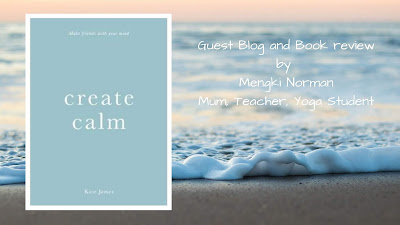Book Review: "Create Calm" by Kate James
In 2019, more people than ever are struggling with anxiety and negative thoughts, and finding some peace of mind and composure is high on the list for most of us. Life coach Kate James’s book, Create Calm, written on managing stress and what she calls “difficult thoughts”, is a carefully compiled and highly accessible resource for anyone grappling with the stress of modern-day living – and that is really everyone.
James describes her book as not intended as a replacement for professional help in dealing with mental health issues, but rather an extra tool to have and refer to. For this reason she attempts to explain and describe as many techniques for “creating calm” as can be listed, from exercise and sleep, mindfulness, creativity, talking, all the way through to professional support if it is needed. The book’s extensive contents page enables the reader to flick between sections that may be relevant or of interest to them, and each section is no longer than a few pages. James’ clear yet detailed descriptions of each method or technique is one of the book’s strengths.
Another of Create Calm’s strengths is that it is designed to be utilized one of two ways. If you were experiencing a moderate amount of stress and were interested in learning methods of calming the mind, then you might, as James’ suggests, read the book cover to cover and try one new technique per week. For those of us experiencing more serious anxiety or negative thinking, the checklist James provides at the beginning of the book enables us to identify specific areas we want to focus on first, and move straight to the corresponding sections of the book. Again, the contents page allows you to find exactly what you’re looking for.
It is important to take note of which techniques are effective for you as an individual, as naturally not everything in the book will be. For myself, I identified the areas I wanted to focus on and then tried several techniques for each until I found one that resonated with me. For example, using James’s checklist, I quickly identified that I wanted to focus on being non-reactive and cultivating equanimity. Therefore I flicked to the relevant section of the book, and the next difficult situation or thought I experienced, I used the technique outlined therein, which uses the acronym RAIN. These four steps are all about getting you to notice and reflect upon the way you are feeling, while not over-identifying with your emotions. I found it very helpful, for even just having to stop and mentally walk through the process gave me that extra time to not react as emotionally as I might have. It also gave me a fresh perspective on my emotional state, in considering the idea that I am not my emotions. I can’t say that I experienced an overnight shift in my thinking, but as James points out, change of any kind is a slow process, but particularly when attempting to alter ways of thinking that are habitual. However, keeping this book close by and opening it in the midst of a negative thought spiral has been invaluable for me in beginning to initiate that change.
Mengki Norman is a new mum, school teacher and yoga student.




Comments
Post a Comment